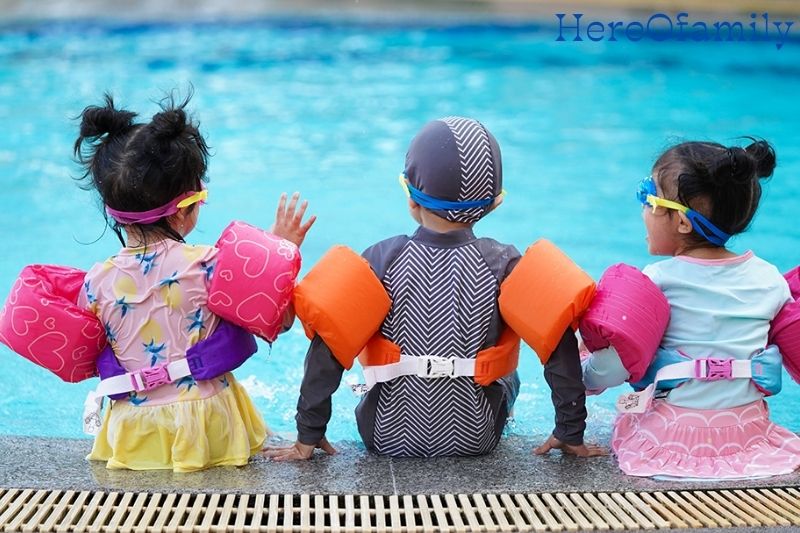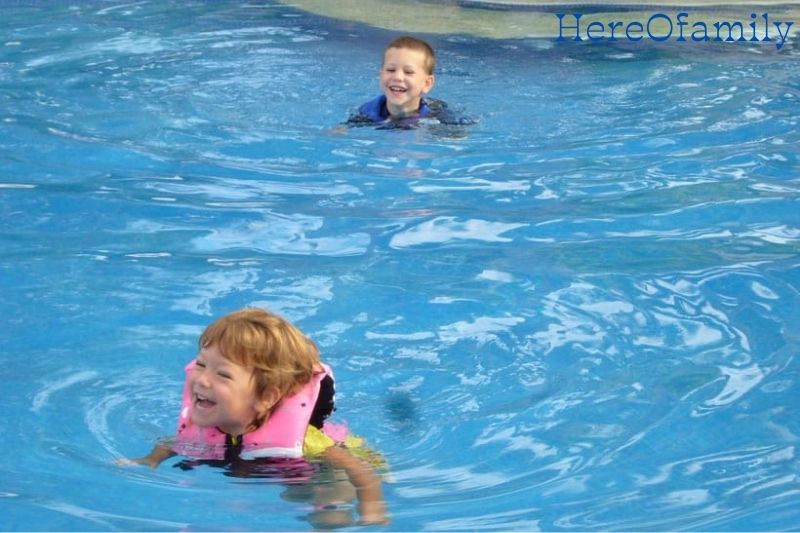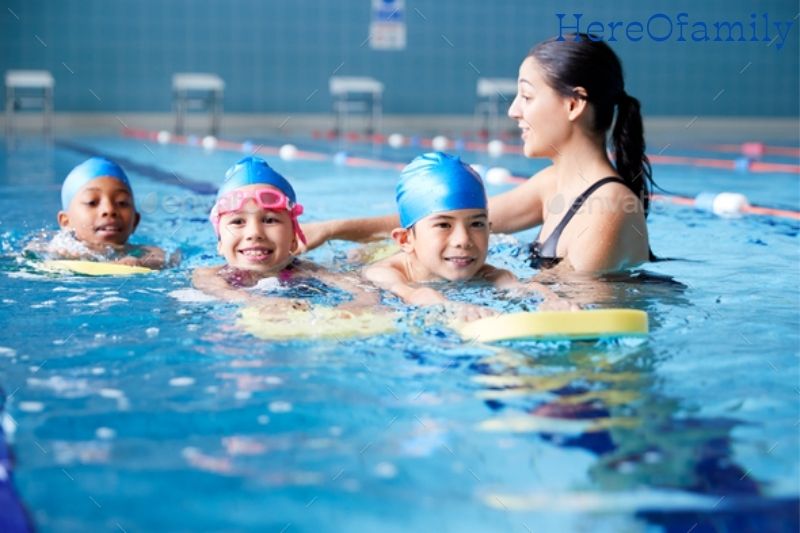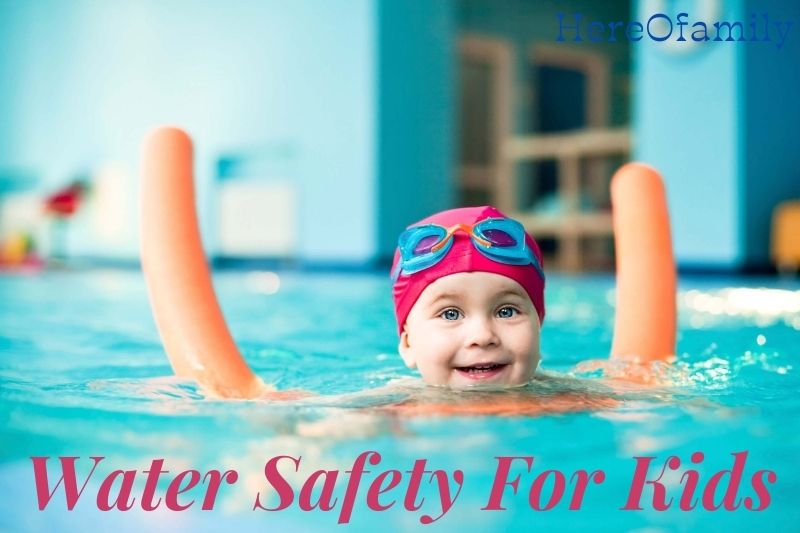- No Voice
As the weather gets warmer and school gets out for summer break, more and more kids will be spending time near the water. Whether it’s a pool, lake, or the ocean, it’s essential to make sure your children know how to stay safe.
Here are some tips on water safety for kids.
Contents
- 1 Drowning’s Uncomfortable Truths
- 2 Water Safety For Kids: Top Tips
- 3 Water Safety Rules For Children
- 3.1 1. Take a walk near the water
- 3.2 2. Make sure you’re wearing a life jacket
- 3.3 3. Obtain permission before entering the water
- 3.4 4. Have an adult keep an eye on the kids
- 3.5 5. Enter the water with your feet first
- 3.6 6. Go for a swim with a friend
- 3.7 7. Avoid swimming in fast-moving water
- 3.8 8. Make sure you stay in the authorized area
- 3.9 9. When you’re tired, get out
- 3.10 10. There will be no horseplay
- 4 What to Do in an Emergency?
- 5 FAQs
- 6 Conclusion
Drowning’s Uncomfortable Truths
Drowning is the most common cause of injury-related death in children aged 1 to 4.
And among children aged 19 and younger, it is the third highest cause of unintentional injury-related death.
Children under the age of one are more likely to drown in the bathtub or a bucket at home.
Water Safety For Kids: Top Tips
When children are in or near water, keep an eye on them without becoming distracted. Because small children can die in as little as one inch of water, it’s critical to honor them within an adult’s reach.
After each usage, empty tubs, buckets, containers, and children’s pools, keep them upside down and out of reach of children.
Lids and doors should be closed. When not in use, keep toilet lids and doors of bathrooms and laundry rooms closed.

Install a fence around your pool at home. A pool fence should be at least four feet tall and have self-closing and self-latching gates.
Learn how to do CPR and basic water rescue techniques. It’s critical to know how to react in an emergency without jeopardizing your safety.
Water Safety Rules For Children
Adults still have the most critical rule for water safety: never leave your child unaccompanied near any amount of water for any length of time.
Nonetheless, 876water safety should be taught to your children. For your children’s protection, here are ten water safety rules.
1. Take a walk near the water
The pool deck and restroom floor are also prone to slipping. Even when you’re delighted, moving slowly and safely is critical. Otherwise, your children may suffer significant harm if they strike their heads.
2. Make sure you’re wearing a life jacket
If your child is a non-swimmer or a novice swimmer, it is recommended that they wear a life jacket or puddle jumpers at all times in the pool.
Swimming pool noodles and arm floaties are not certified safety devices and may give the impression of safety. Life jackets are a good idea when you’re near natural bodies of water like rivers, lakes, or the ocean.
3. Obtain permission before entering the water
When approaching or entering the water, your child should always ask your permission first. They should be taught that they should never switch on the bathwater or the hose without your consent.

4. Have an adult keep an eye on the kids
In the event of an emergency, there must be an adult present. Adult supervision must be constant, uninterrupted, and undistracted.
5. Enter the water with your feet first
Head-first diving can result in significant head injuries. It’s crucial to check with lifeguards and seek posted signs if diving is permitted. Always leap in with your feet first. Never dive into a pool’s shallow end or a body of water whose depth you don’t know.
6. Go for a swim with a friend
This goes hand in hand with always asking permission, but it’s worth repeating that a child should never be in the water alone. It should be a competent adult with sound judgment if your child is a non-swimmer.
A buddy system can inform nearby adults when anything is awry if your youngster can swim and is incredibly responsible with excellent judgment.
7. Avoid swimming in fast-moving water
Teach your kids that water with a current can be dangerous. While certain slow-moving regions are safe for children, rivers, streams, and creeks should be avoided.
Of course, there is an apparent exemption to this rule if your child seeks permission (rule #3) and you know it’s safe. There may be exceptions in the form of safe, life-guarded places. Nonetheless, for any natural body of water with a current, adult supervision and a lifejacket remain the safest options.
Teach your kids to seek the appropriate markers. Teach your youngster to read the signs that indicate the water depth at the pool. Make sure your youngster understands that a pool lane marker or lane rope with a float is a boundary to respect, not a toy to cling to.
9. When you’re tired, get out
They may drown when someone is too weary to make it back to shore or the pool’s side. Set a time limit for swimming with your kids, and make sure they exit the pool before becoming exhausted.
10. There will be no horseplay
When it comes to horseplay, adolescents are more in danger of drowning. They can dunk each other lightheartedly but fail to notice when one of their peers is having difficulty.
As an adult, you can be an example of this. Refrain from tossing your youngster around in the water. Young children must acquire a sense of body autonomy to set and defend boundaries with their peers as they grow older.
What to Do in an Emergency?
Always examine the pool or other body of water first if a youngster goes missing. A timely rescue is essential for survival, as is resuming breathing as quickly as possible:
If you come upon a child in the water, pull them out while shouting for help. If there is anyone else around, have them dial 911.
Examine the child’s airways to ensure they are clear. If you are certified, begin CPR if the youngster is not breathing. Follow the directions given by the 911 emergency operator.

If you suspect the youngster has suffered a neck injury, such as by diving, take the following steps:
Maintain the child’s position on their back.
Brace your neck and shoulders with your hands and forearms to keep them from moving until aid arrives. This can help prevent subsequent spinal injuries.
To keep the youngster quiet, keep the child immobile and speak in calm tones.
FAQs
What is the best way for toddlers to learn about water safety?
Roleplay with your child is an excellent way to teach preschoolers about water safety. To make a “pool,” use cardboard or tape. Demonstrate how to walk near the pool and what to do if they fall in. Do they reach for a toy in the collection?
What can we do to ensure water safety?
Preventing Waterborne Disease
- Never leave a little child alone in the bathtub for more than a minute.
- Remove any liquids from buckets or other containers.
- To keep your youngster out of the bathroom, close the bathroom doors and install childproof measures (such as doorknob coverings).
Why is it critical that children learn about water safety?
No matter how good a swimmer your child is, you should always watch them when they’re in or near water. Even children who know how to swim are vulnerable to drowning. A child, for example, could slip and fall on the pool deck, lose consciousness, and fall into the pool, drowning.

What are the four sections of the Code of Water Safety?
The Water Safety Code is divided into four sections: • Recognize the threats. Take safety precautions. It’s not a good idea to go alone. Learn how to assist others.
What methods do you use to educate water safety?
To teach this water safety technique, follow these three steps:
- Step 1: Assist your swimmer until they master the jump, breathe, turn, swim to the wall, and climb out sequence.
- Step 2: You provide less assistance, usually in hints.
- Step 3: Your swimmer will complete the task on their own.
Conclusion
Water safety for kids is an important topic, and each year the number of drowning-related deaths continues to rise. It’s up to parents and educators to help keep kids safe near water. Being proactive can prevent many water-related accidents.
HereOfamily hopes you find these tips are useful for you. Thanks for reading this article, and please share it with your friends.
